The Anglo-American War of 1812 had decimated the defences of Upper Canada, by war’s end all the major fort’s constructed in the pre-war era had faced destruction throughout the war. Fort York and Fort George in York (Toronto) and Newark (Niagara-On-The-Lake) respectively had been destroyed in 1813, Fort Erie and Fort St. Joseph in 1814. The British knocked down Fort Amherstburg in their retreat in 1813. The only major fort to survive the war was Fort Henry in Kingston only because it defended the Royal Navy dockyard. And while the British had captured two major American forts during the war, Fort Niagara and Fort Mackinac. The trouble remained that they were returned to the Americans following the war by the terms of the Treaty of Gent. The war had shown once again that Upper Canada would be open to future invasions. The Board of Ordinance under the command of Field Marshal Sir Authur Wellsely, Lord Wellington would take steps to ensure that the border between Upper Canada and the United States could stand secure.
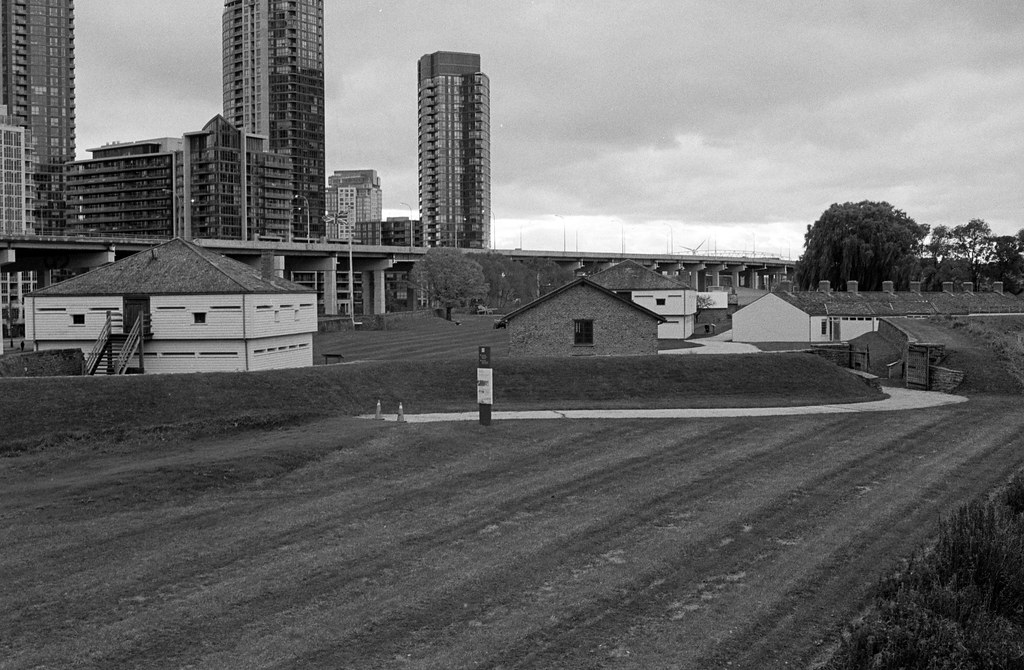
Nikon F6 – AF Nikkor 50mm 1:1.4D – Kodak Tri-X @ ASA-400 – Kodak D-76 (1+1) 9:45 @ 20C
At York, construction on a new garrison began in 1814 to replace the Fort that saw destruction in 1813. The first move would see the new post constructed on the west side of Garrison Creek; today buried under Bathurst Street. The first buildings were a pair of blockhouses and a brick magazine. Earthen walls surrounded the post with four artillery batteries providing wide firing arcs against ships and infantry assaults. By war’s end, a second stone magazines saw construction as did officers quarters and a kitchen. At Newark, in the spring of 1814 Fort Mississauga began construction at Mississauga Point. The new fort would replace Fort George, destroyed during the American attack and occupation and occupy a different location. The old lighthouse was demolished, and the bricks used in its construction combined with bricks salvaged from the ruins of the town used to build the single central blockhouse. A star-shaped earthen wall surrounded the blockhouse and the wooden officer’s quarters, cookhouse, and guard house. Fort Mississauga was little more than a forward artillery battery with heavy guns mounted on the walls and in the blockhouse itself and designed to challenge any ships attempting to enter the river and provide a counterpoint to the American guns at Fort Niagara.
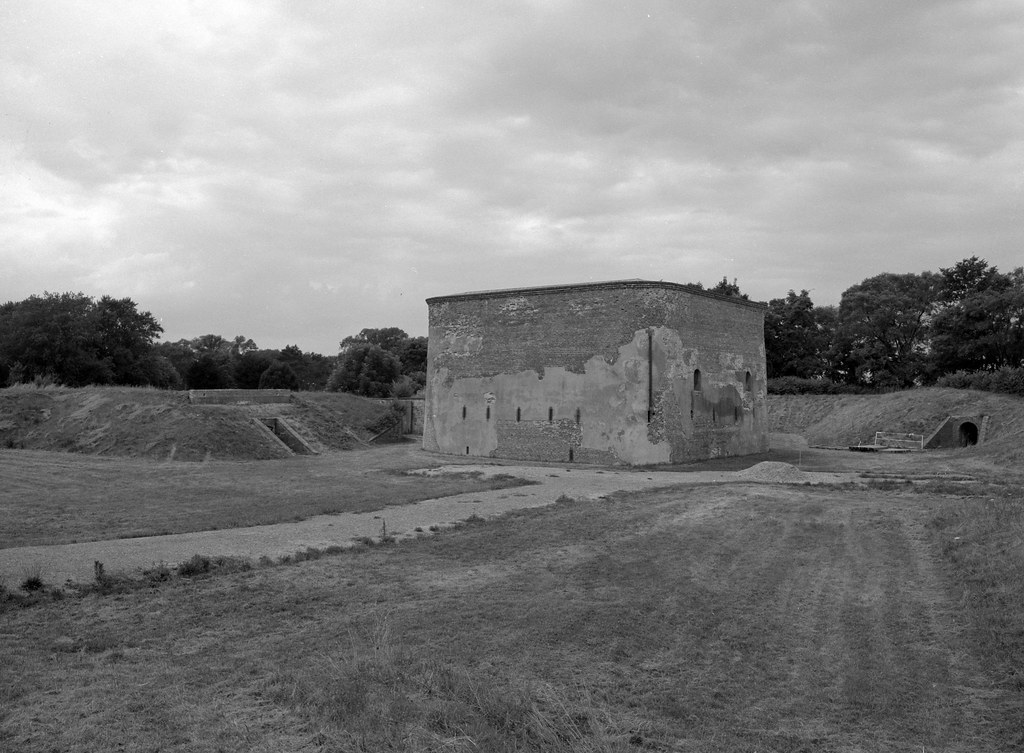
Mamiya m645 – Mamiya-Sekor C 45mm 1:2.8 N – Ilford FP4+ @ ASA-100 – Kodak D-23 (Stock) 6:00 @ 20C
At Newark, while Fort Mississauga provided the muscle, the brains were at Butler’s Barracks. Built far from the Niagara River and the threat of American guns, construction began in late 1814 and continued through 1815. While surrounded by a tall wooden palisade and several artillery batteries and redoubts the primary purpose of the complex was the administration of the garrison on the Niagara Frontier. The complex housed several barracks for enlisted and non-commissioned officers. Handsome brick officers quarters, kitchens and mess halls. An office for the British Indian Department and Government House. Stables for cavalry units and officer’s horses. Several warehouses and offices for the Commissary Department and a hospital. Gun sheds to house and maintain the artillery pieces for both Butler’s Barracks and Fort Mississauga rounded out the post.
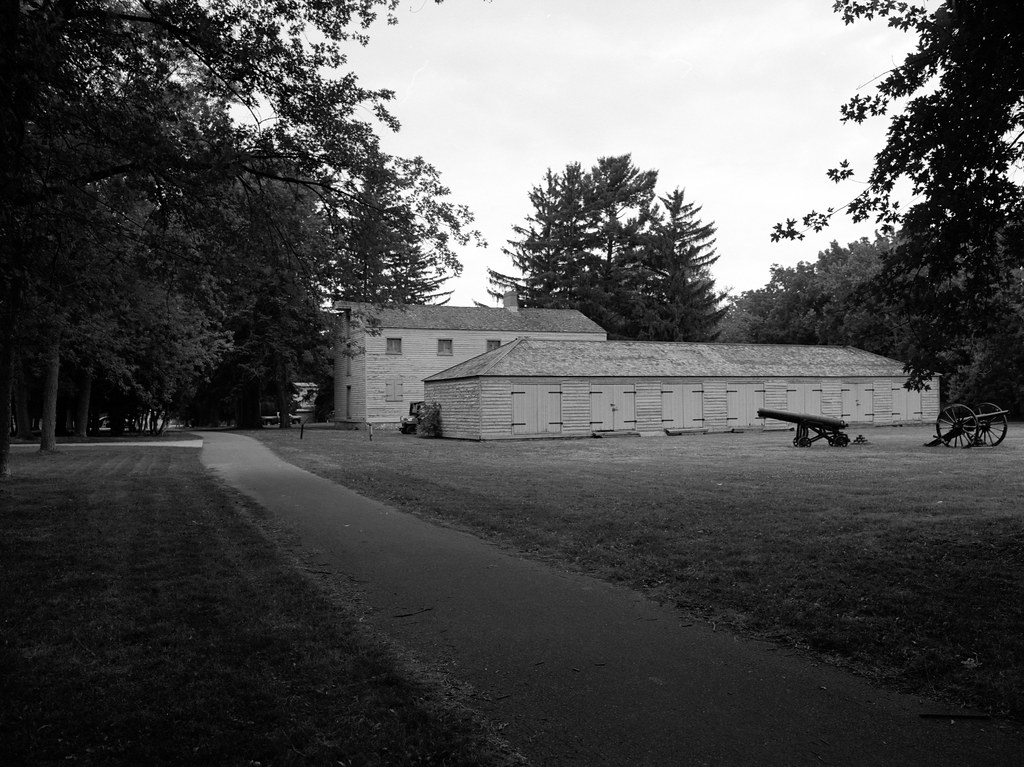
Mamiya m645 – Mamiya-Sekor C 45mm 1:2.8 N – Ilford FP4+ @ ASA-100 – Kodak D-23 (Stock) 6:00 @ 20C
But not all posts were lucky to see reconstruction after the war. During their occupation, the Americans had started work on Fort Malden to replace Fort Amherstburg. The British would leave the American earthen walls half built and construct a small brick barracks to house a token garrison for the town. A similar building saw construction in the small village of Windsor further north on the river. There was no such luck at Fort Erie; the destroyed fort never saw any reconstruction. And though it hosted a small garrison, they lived in tents or temporary wooden structures. Many of the stones taken for the foundation of the under construction St. Paul’s church in the nearby village of Waterloo, today it carries the name Fort Erie. At Prescott, the wooden blockhouse and outbuildings along with the earthen wall were abandoned by the army and left to rot, though the Army maintained ownership of the fort and the land. The only defence was Fort Henry and Fort Fredrick at Kingston to prevent American ships from exiting the St. Lawerence River. But the two forts proved formidable. By the end the war, Fort Henry stood as a maze of blockhouse, redoubts, bastions, and watchtowers and between the two forts they had enough artillery to destroy any American fleet that challenged them.
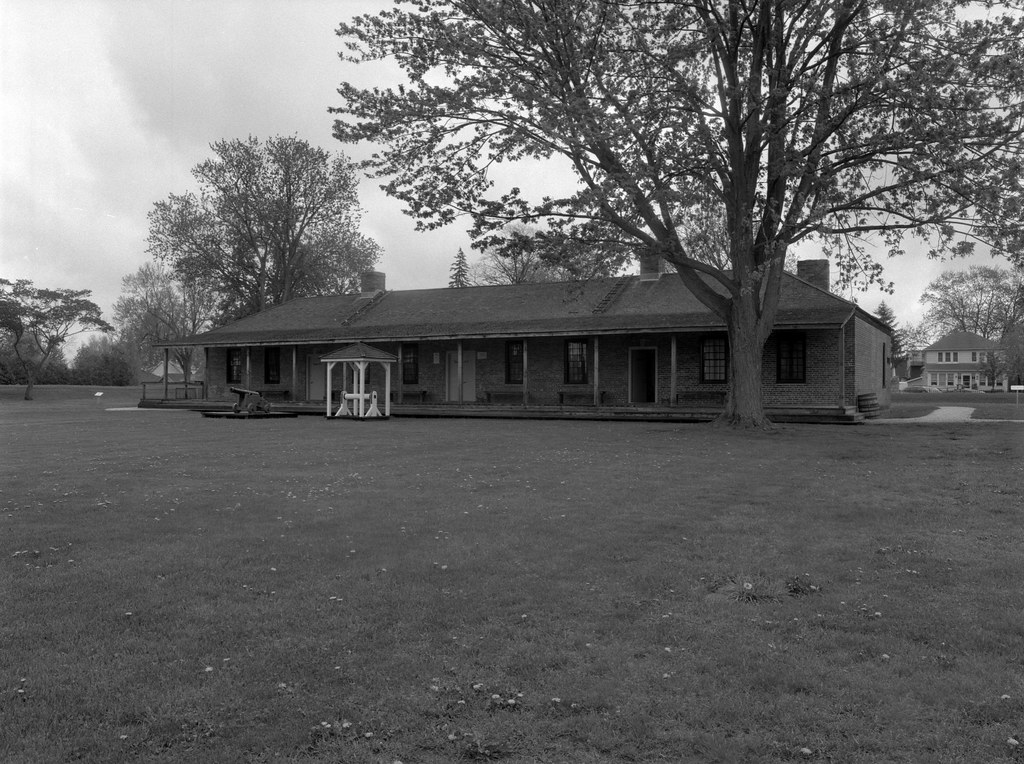
Mamiya m645 – Mamiya-Sekor C 45mm 1:2.8 N – Ilford FP4+ @ ASA-100 – Kodak D-23 (Stock) 6:00 @ 20C
The defence of the Upper Great Lakes proved difficult, when John Graves Simcoe travelled to Georgian Bay in 1793 he found a deep natural harbour and made a point to claim the land for a future naval base for Lake Huron. And while the Royal Navy owned the land, nothing would be done until 1814. Following the loss of the west in October 1813, a new route would be established to resupply the garrison at Fort Mackinac. Lieutenant Colonel Robert McDouall carved Yonge Street north to Lake Simcoe and the Nottawasaga River. And while the first post at Wasaga would be destroyed later in that year, construction would begin on the Penetanguishene Naval Establishment. Commodore James Lucas Yeo laid out a large post complete with a small shipyard and planned to build several warships, including a frigate on Lake Huron. But everything stopped in 1815 when the war ended. Construction resumed and saw completion in 1817 as tensions continued to rise between England and the United States over the border. The first ship posted to the new base was the HMS Tecumseth. Originally built at Chippawa in 1814, the Tecumseth while not as heavily armed provided enough firepower to ensure British control of the lake. Other ships joined the squadron and at their peak, the establishment houses close to twenty ships of various types and classifications. But the signing of the Rush-Baggot Agreement would change Penetanguishene forever. The warships stripped of their guns and the naval yard reduced to a storage facility. Although it continued to be a hub for resupply and trade along the upper Great Lakes. The ship’s of the squadron was called into action in 1828 when the British post at Drummond Island was forced to evacuate as Drummond Island was turned over to the United States. The post saw a reinvigoration as the British Army established a garrison in tandem with the Navy. By 1834 the Navy would leave Penetanguishene and the army would follow in 1856. Fort Malden would see expansion following the rebellions and would be a military garrison until 1856.
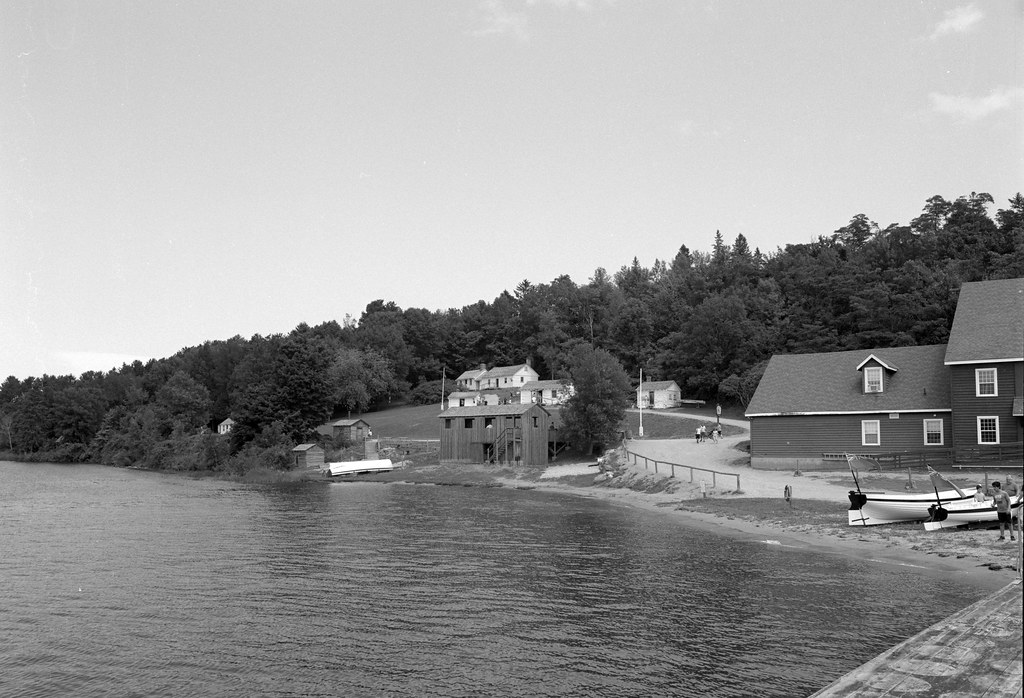
Mamiya m645 – Mamiya-Sekor C 45mm 1:2.8 N – Ilford FP4+ @ ASA-100 – Kodak D-23 (Stock) 6:00 @ 20C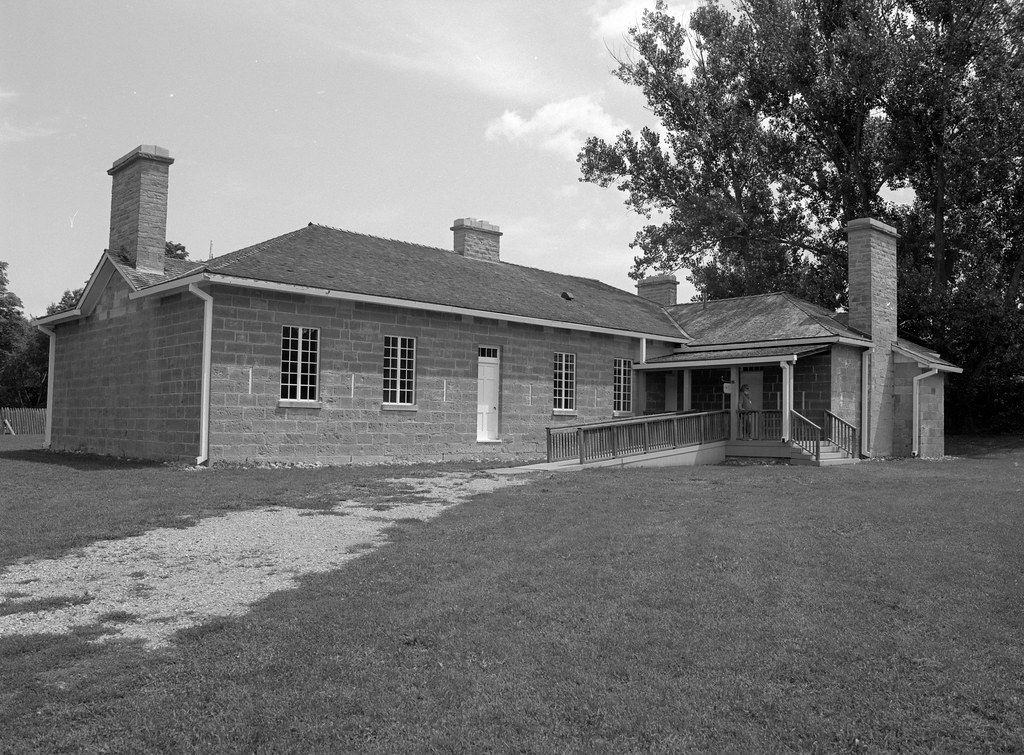
Mamiya m645 – Mamiya-Sekor C 45mm 1:2.8 N – Ilford FP4+ @ ASA-100 – Kodak D-23 (Stock) 6:00 @ 20C
By the end of the 1850s, the British Army again saw a significant reduction in their garrison in Upper Canada in response to the Crimean War and the Indian Revolt. At Toronto, most military operations moved in 1841 to a new fort, also named Fort York. Fort Henry saw demolition and the construction of a larger limestone fort in the late 1830s. By 1859 the Penetanguishene Establishment had been converted into a Youth Reformatory. Fort Malden would also serve as an Asylum from 1859 to 1875 before many of the structures were either demolished, moved or turned into private homes. Larger forts like Fort Henry, Fort Mississauga, and Butler’s Barracks were turned over to the Canadian Government for use as training posts for the Active Militia and the Permanent Force. With the total withdrawal of the British Army and Royal Navy being completed by 1870. The Youth Reformatory in Penetanguishene closed, and the buildings reopened in 1904 as an asylum for the mentally ill. Many former forts were used again as training depots during the First, Second, and Korean Wars. Butler’s Barracks along with Fort Mississauga and the area once occupied by Fort George collectively known as Camp Niagara. While New Fort York in Toronto provided a better space for training, the Old Fort continued to see use during both World Wars. Although Fort York would stand threatened in 1905 by a streetcar route to the Canadian National Exhibition grounds, quick actions in 1909 with the transfer of the fort to the City on the provision they preserved the site’s buildings.
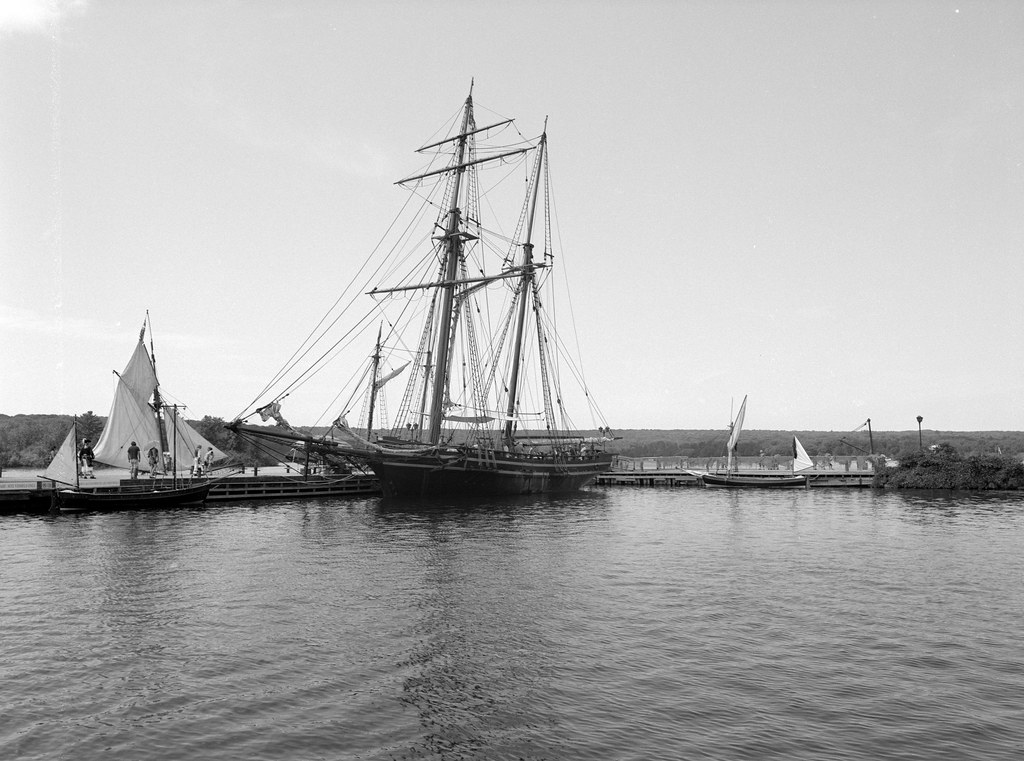
Mamiya m645 – Mamiya-Sekor C 45mm 1:2.8 N – Ilford FP4+ @ ASA-100 – Kodak D-23 (Stock) 6:00 @ 20C
Fort York would be the first site to reopen as a museum in 1923, despite its continued service to the military through the wars. By the 1930s, Canada had begun to take ownership of many historical sites, and several were slated for reconstruction as make-work projects during the Great Depression. Several sites saved by these projects including Fort Mississauga, Fort Wellington, Fort George, and Fort Erie. Fort George and Fort Erie saw complete reconstruction. By the end of the Korean War, the Canadian military had abandoned the last remains of Butler’s Barracks, which went on to host a major Scouts Jamboree. Fort York was again threatened in the 1950s with the plan to build the Gardner Expressway through the Fort, but again the Fort survived its final siege. By 1971 the Ontario Government purchased the old Penetanguishene Naval Establishment when patients at the asylum were transferred to a modern facility nearby and began restoration work on the old buildings. Today all the sites discussed here can be visited as either historic sites or living history museums. Fort York stands as the largest collection of War of 1812 era buildings in Canada with almost all of the structures on site original or rebuilt from original materials. Fort Mississauga is also original, although it is not staffed there are signs to help with a self-guided tour. Be careful and watch out for golfers if you do visit. The 1815 Barracks remain one of the few buildings left standing at Fort Malden and is open through the spring and fall during the year. Penetanguishene is known as Discovery Harbour today and houses many original buildings, although the highlights are the 1991 replica of the HMS Tecumseth and the HMS Bee which are publicly accessible. Discovery Harbour also houses the original hull of the Tecumseth which was discovered in 1953 and housed in a specially built structure which opened in 2014. The HMS Tecumseth Centre also houses a wealth of artefacts from the entire life of the property. And this year will play host to the War of 1812 Grand Tactical Event this summer!